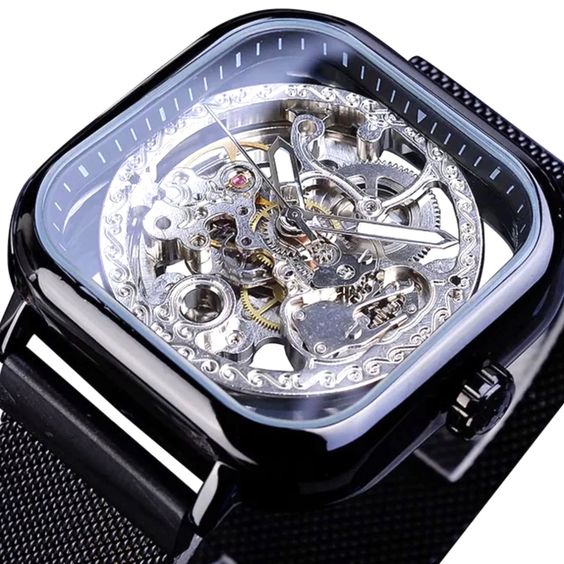
Wristwatches have transcended their functional role as timekeeping devices to become symbols of craftsmanship, precision, and heritage. While modern technology has introduced smartwatches and digital timepieces, the allure of traditional mechanical watches endures. Behind the timeless elegance of these intricate mechanisms lies a rich tapestry of science, engineering, and artistry. Let’s delve into the captivating world of traditional watchmaking and unravel the science behind its mechanical mastery.
The Heartbeat of Horology: Understanding Mechanical Movements
At the core of every mechanical watch lies its beating heart: the movement. Often likened to an engine, the movement comprises a complex arrangement of gears, springs, and oscillating balances meticulously crafted to measure time with precision. Two primary types of mechanical movements exist: manual and automatic.
Manual Movements: Handcrafted Precision
Manual movements, also known as hand-wound movements, require the wearer to manually wind the watch regularly to maintain its power reserve. This intimate interaction with the timepiece forms a connection between the wearer and the watch’s inner workings. Each turn of the crown transfers energy to the mainspring, storing potential energy that regulates the release of power as the watch ticks how a mechanical watch works the seconds, minutes, and hours.
Automatic Movements: Harnessing Kinetic Energy
In contrast, automatic movements harness the kinetic energy generated by the wearer’s natural motion to wind the watch’s mainspring. Inside the case, a rotor pivots with the movement of the wrist, winding the mainspring through a series of gears and transmitting energy to the escapement. This ingenious mechanism allows the watch to remain powered as long as it is worn regularly, eliminating the need for manual winding.
Precision Engineering: The Escapement and Balance Wheel
At the heart of every mechanical movement lies the escapement, a marvel of precision engineering that regulates the release of energy from the mainspring to the gear train. The escapement consists of a pallet fork and escape wheel, which interact with each other in a rhythmic motion, imparting incremental impulses to the balance wheel.
The balance wheel, often adorned with a delicate hairspring, oscillates back and forth at a precise frequency, dividing time into equal intervals. This oscillation is the heartbeat of the watch, and its accuracy is crucial for maintaining precise timekeeping. Skilled watchmakers meticulously adjust the balance wheel’s amplitude and rate to achieve optimal performance, ensuring that each tick of the watch is as precise as the last.
Horological Artistry: The Dial and Complications
Beyond the mechanical intricacies of the movement, traditional watchmaking also encompasses an artistry that manifests in the watch’s dial and complications. The dial serves as the face of the watch, displaying the time in a clear and legible manner while providing a canvas for artistic expression. From minimalist designs to ornate guilloché patterns, dials showcase the craftsmanship and aesthetic sensibilities of the watchmaker.
Complications, additional functions beyond basic timekeeping, further exemplify the mastery of traditional watchmaking. From chronographs and moon phases to perpetual calendars and tourbillons, complications add complexity and functionality to mechanical timepieces. Each complication represents a technical challenge overcome through ingenuity and expertise, showcasing the pinnacle of horological innovation.
Preserving Tradition in a Digital Age
In an era dominated by digital technology and mass production, traditional watchmaking stands as a testament to craftsmanship, heritage, and timeless elegance. While smartwatches offer convenience and connectivity, they lack the soul and artistry inherent in mechanical timepieces. For enthusiasts and collectors, the allure of owning a handcrafted mechanical watch lies in its tangible connection to history and tradition.
As the world continues to embrace innovation and automation, the art of traditional watchmaking perseveres, fueled by a passion for excellence and a commitment to preserving centuries-old techniques. Each mechanical watch bears the imprint of its maker, a testament to their skill, dedication, and unwavering pursuit of perfection.
Conclusion
Traditional watchmaking is more than just the assembly of gears and springs; it is a harmonious blend of science, artistry, and craftsmanship. From the precision engineering of the movement to the intricate detailing of the dial, every aspect of a mechanical watch reflects the dedication and skill of its maker. In an age of digital convenience, the enduring appeal of mechanical timepieces reminds us of the beauty of slow craftsmanship and the timeless elegance of tradition.
Top of Form
